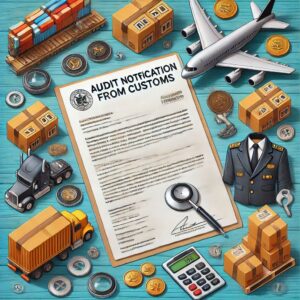A well-defined logistics strategy is vital for businesses as it streamlines operations, reduces costs, and ensures timely delivery. It enhances customer satisfaction by improving service levels, supports efficient inventory management, and fosters better communication across the supply chain, ultimately providing a competitive edge in a dynamic market.
A world without logistics would be chaotic and inefficient. Goods would sit unused in factories, unable to reach stores or consumers, leading to shortages and wasted resources. Businesses would struggle to manage inventory, causing disruptions in production and increasing costs. Without effective transportation and supply chain management, essential services like healthcare and food distribution would falter. Overall, the economy would slow dramatically, making everyday life challenging and unpredictable, as access to products and services becomes limited and unreliable.
What is Logistics?
Logistics is the process of planning, implementing, and controlling the movement of goods, services, and information. It’s about getting the right products to the right place, at the right time, and in the right condition. This is essential for any business that wants to succeed.
Subscribe to the Ex-works24/7 newsletter
Why is Logistics Strategy Important?
A good logistics strategy can help businesses save money, improve customer satisfaction, and increase efficiency. Here are a few reasons why it matters:
Cost Savings: By optimizing routes and managing inventory, companies can reduce shipping and storage costs.
Customer Satisfaction: Fast and reliable delivery can keep customers happy and coming back for more.
Competitive Advantage: A well-planned logistics strategy can set a business apart from its competitors.
Key Components of a Logistics Strategy
Here are some important parts of a logistics strategy:
1. Transportation
Choosing the right transportation method (like trucks, ships, or planes) is crucial. Factors to consider include cost, speed, and distance. A good strategy will balance these to ensure timely delivery without overspending.
2. Warehousing
Warehousing involves storing goods before they reach the customer. A smart warehousing strategy optimizes space and ensures that products are easy to find and ship when needed.
3. Inventory Management
Keeping the right amount of stock is essential. Too much inventory can lead to high storage costs, while too little can result in missed sales. A good logistics strategy helps businesses manage inventory levels effectively.
4. Information Flow
Communication is key in logistics. This means sharing data about inventory levels, shipping status, and customer orders. Efficient information flow helps everyone involved stay informed and make better decisions.
5. Technology Use
Technology plays a huge role in logistics today. From tracking shipments to managing inventory, tools like software and apps can streamline processes and improve accuracy.
Steps to Create a Logistics Strategy
If you’re looking to create a logistics strategy for your business, here are some simple steps to follow:
Analyze Your Current Situation: Look at how your goods are currently moving. Identify strengths and weaknesses.
Set Clear Goals: Determine what you want to achieve. This could be reducing costs, improving delivery times, or enhancing customer service.
Choose Your Transportation Methods: Decide how you will move your products. Consider factors like cost, speed, and reliability.
Plan Your Warehousing Needs: Assess how much space you need and where to locate your warehouses for maximum efficiency.
Implement Technology Solutions: Use software to track inventory, manage shipments, and communicate with your team.
Monitor and Adjust: Once your strategy is in place, keep an eye on performance. Be ready to make changes as needed to improve efficiency.
In conclusion, a solid logistics strategy is essential for any business that wants to thrive. By understanding the key components and following a structured approach, you can create a logistics plan that helps you save money, delight customers, and stay ahead of the competition.
Frequently
Asked Questions
Logistics strategy involves planning and managing the movement of goods and services. It's crucial for optimizing costs, improving customer satisfaction, and gaining a competitive edge.
The main components include transportation, warehousing, inventory management, information flow, and technology use. Each plays a vital role in ensuring efficient logistics operations.
A business can create an effective strategy by analyzing its current logistics processes, setting clear goals, choosing transportation methods, planning warehousing needs, implementing technology, and regularly monitoring performance.
Technology enhances logistics strategy by providing tools for tracking shipments, managing inventory, and improving communication. It helps streamline operations and increases accuracy.
An effective logistics strategy ensures timely and reliable delivery of products, which boosts customer satisfaction. Good logistics also minimizes errors and improves overall service quality.




